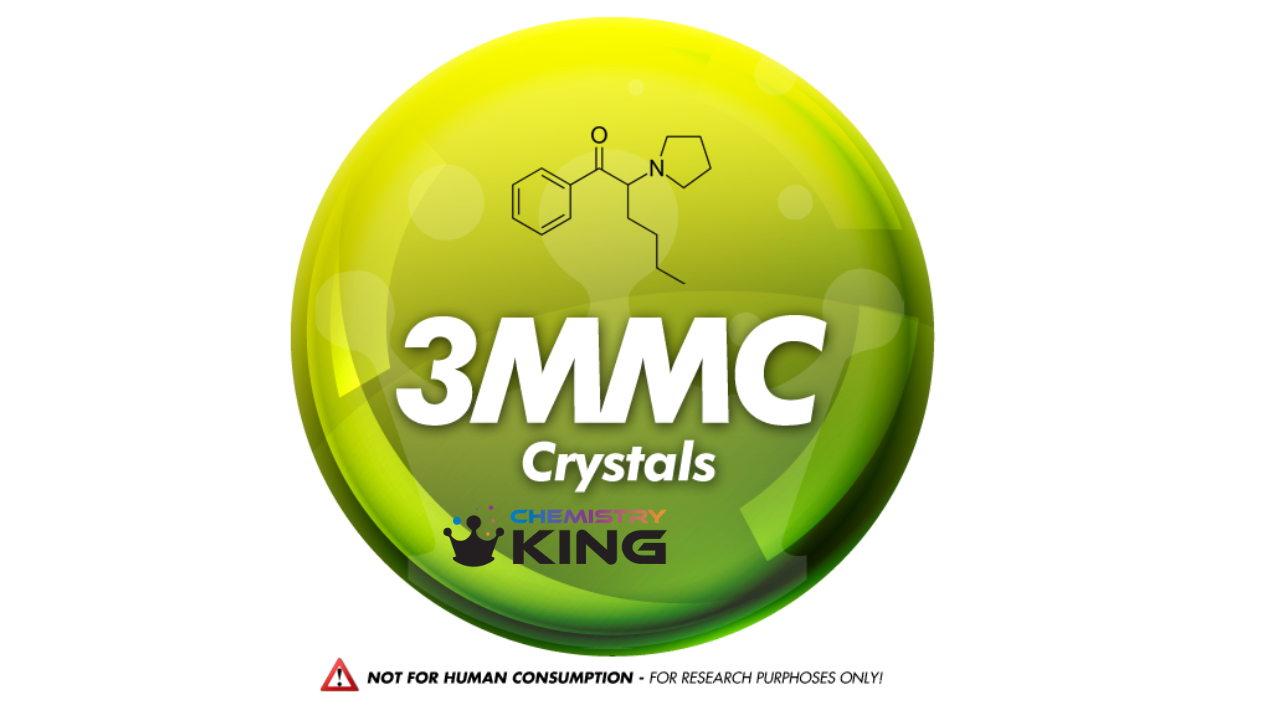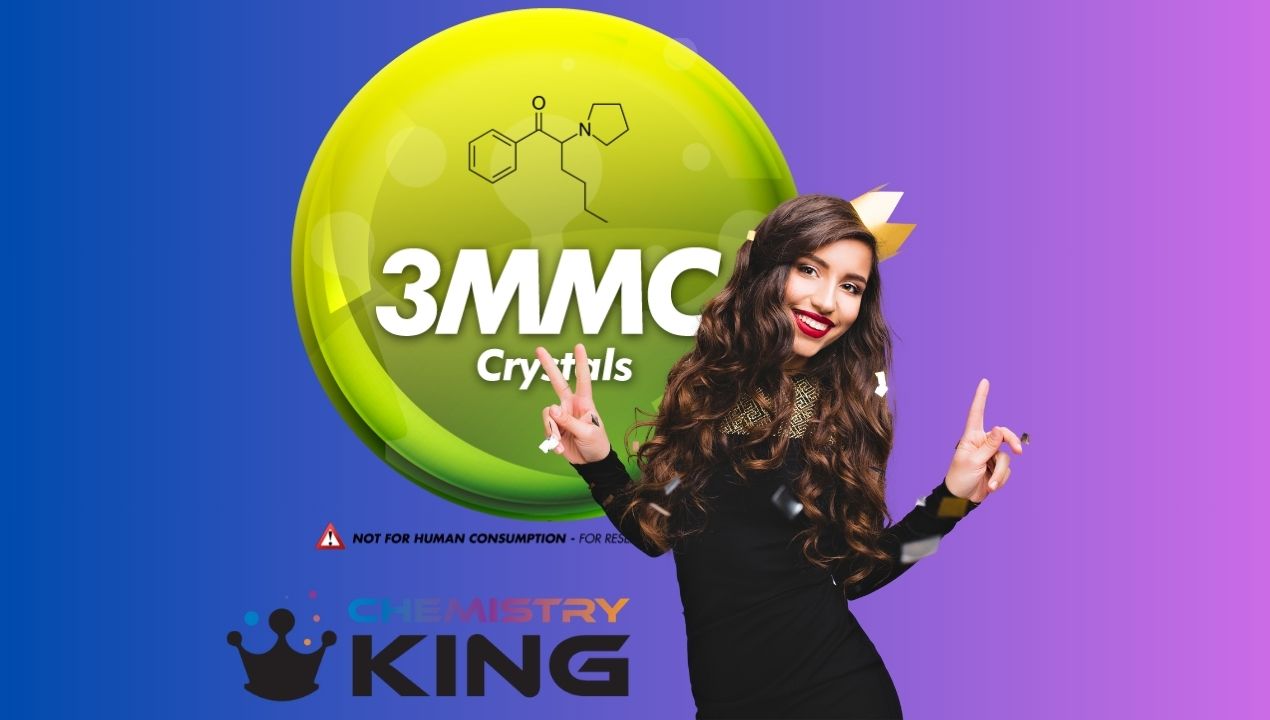Comparing 3MMC and 3FMC
Premium research chemicals, lowest prices guaranteed
Exploring the Differences Between 3MMC and 3FMC: A Deep Dive into Research Chemicals
In the ever-evolving landscape of research chemicals, there are few compounds that have sparked as much intrigue and curiosity as 3MMC and 3FMC. These two compounds, although similar in many respects, offer unique properties that make them the subject of rigorous study in laboratories around the world. If you’ve been browsing through Chemistry King’s treasure trove of high-purity research chemicals, you’ve likely encountered these intriguing names. But what exactly are 3MMC and 3FMC, and how do they stack up against each other? Let’s embark on a deep, playful, and informative exploration of these fascinating compounds, delving into their structures, effects, and the reasons why they’ve become staples in the world of research.

3MMC: The Rising Star in Research
Let’s kick things off with 3MMC, or 3-Methylmethcathinone. A member of the cathinone family, 3MMC is a synthetic derivative of substances naturally found in the khat plant, a shrub native to East Africa and the Arabian Peninsula. But don’t let its natural roots fool you—3MMC is a meticulously engineered compound, designed specifically for research purposes.
Chemical Structure and Properties: At its core, 3MMC is closely related to the well-known compound mephedrone (4MMC), which has been extensively studied for its stimulant effects. The key difference lies in the placement of a methyl group on the third carbon atom of the phenyl ring—hence the name 3-Methylmethcathinone. This seemingly small structural change can have significant implications for how the compound behaves in a research setting.
In the lab, 3MMC is typically studied for its potential effects on the central nervous system. Researchers are particularly interested in how it interacts with key neurotransmitters like dopamine, norepinephrine, and serotonin—chemical messengers that play a crucial role in regulating mood, motivation, and overall mental well-being.
Research Applications: When scientists delve into the world of 3MMC, they often explore its stimulant-like properties. Early research suggests that 3MMC can induce wakefulness, increase focus, and elevate mood in controlled settings. These effects make it a popular subject for studies aimed at understanding how certain chemicals can influence behavior and cognition.
Interestingly, because of its structural similarity to mephedrone, 3MMC is often compared to its predecessor. However, many researchers note that 3MMC may produce effects that are somewhat milder and more manageable in controlled environments, making it a valuable tool for studies that require a more nuanced understanding of stimulant properties.
3FMC: A Close Cousin with a Fluorinated Twist
Now that we’ve familiarized ourselves with 3MMC, let’s turn our attention to its close cousin, 3FMC, or 3-Fluoromethcathinone. Like 3MMC, 3FMC is part of the cathinone family, but it comes with a key difference that gives it a unique set of characteristics—a fluorine atom attached to the third carbon of the phenyl ring, replacing the methyl group found in 3MMC. This might seem like a minor alteration, but in the world of chemistry, it’s a game-changer.
Chemical Structure and Properties: Fluorine is one of the most electronegative elements, meaning it has a strong tendency to attract electrons. When a fluorine atom is introduced into a compound like 3FMC, it can significantly alter the way the molecule interacts with biological systems. In the case of 3FMC, the presence of fluorine is thought to influence the compound’s binding affinity to neurotransmitter transporters, leading to differences in how it affects neurotransmitter levels in the brain.
This fluorinated twist gives 3FMC a distinct profile that sets it apart from 3MMC. While both compounds share a common cathinone backbone, the substitution of a methyl group with a fluorine atom creates a unique set of properties that researchers are eager to explore.
Research Applications: Just like 3MMC, 3FMC is primarily studied for its stimulant properties. However, the fluorine atom in 3FMC means that it may interact differently with neurotransmitter systems, leading to variations in potency, duration of action, and overall effects observed in laboratory studies.
Researchers often focus on 3FMC’s impact on the dopamine and serotonin systems, which are crucial to mood regulation and motivation. The presence of the fluorine atom might result in more selective interactions with certain receptors, offering insights into how small chemical changes can lead to significant differences in pharmacological effects.

We sell our products exclusively to customers aged 18 and over, strictly for research purposes only.

Comparing 3MMC and 3FMC: Similar Yet Different
When it comes to comparing 3MMC and 3FMC, it’s essential to recognize that while they share a similar chemical backbone, the differences in their side groups—the methyl group in 3MMC versus the fluorine atom in 3FMC—can lead to distinct research outcomes. Let’s break down some of the key areas where these two compounds diverge.
One of the first questions researchers often ask is: Which compound is more potent? While the answer can vary depending on the specific research context, some studies suggest that 3FMC may be slightly more potent than 3MMC. The fluorine atom’s presence in 3FMC could enhance its binding affinity to certain neurotransmitter transporters, potentially leading to stronger or more prolonged effects.
However, this increased potency can be a double-edged sword. While it may make 3FMC more effective in certain research applications, it also means that researchers need to carefully control dosages and experimental conditions to avoid unwanted side effects.
Another critical difference between 3MMC and 3FMC lies in the duration of their effects. Research indicates that 3MMC might have a shorter duration of action compared to 3FMC. This difference is likely due to the distinct metabolic pathways involved in processing each compound. The fluorine atom in 3FMC could slow down its metabolism, allowing its effects to last longer.
For researchers, this difference in duration can be crucial depending on the nature of the study. If the goal is to observe short-term, acute effects, 3MMC might be the compound of choice. Conversely, for studies requiring prolonged observation, 3FMC could be more suitable.
Safety is always a top concern in any research involving chemical compounds, and 3MMC and 3FMC are no exception. While both are studied for their potential stimulant effects, the differences in their chemical structures mean they may have different side effect profiles.
3MMC, given its close resemblance to mephedrone, might share some of the same side effects observed in studies of 4MMC. These could include increased heart rate, heightened blood pressure, and potential overstimulation in certain experimental models. Researchers need to be mindful of these factors when designing studies involving 3MMC.
On the other hand, 3FMC’s unique fluorinated structure might lead to a different range of effects. Some researchers hypothesize that the fluorine atom could contribute to a more favorable safety profile, potentially reducing the likelihood of certain side effects. However, this is still an area of active investigation, and more research is needed to draw definitive conclusions.
Why Choose One Over the Other
So, with all this information in mind, how do researchers decide between 3MMC and 3FMC? The choice often comes down to the specific goals of the study and the particular properties each compound offers.
If the research is focused on understanding the effects of methylated cathinones, 3MMC might be the compound of choice due to its structural similarity to other well-studied cathinones like mephedrone. Its relatively mild effects compared to 4MMC make it a useful tool for studies that require a balanced approach to stimulant research.
On the other hand, if the study aims to explore the effects of fluorinated compounds, 3FMC could offer unique insights that its non-fluorinated counterparts cannot provide. The presence of the fluorine atom may result in more selective interactions with neurotransmitter systems, making 3FMC an attractive option for studies focused on targeted pharmacological effects.

The Chemistry King Advantage
Whether you’re leaning toward 3MMC or 3FMC, Chemistry King is your go-to source for high-quality research chemicals. As a trusted online retailer, Chemistry King ensures that every product, including 3MMC and 3FMC, undergoes rigorous testing in certified labs to guarantee purity and consistency. This commitment to quality means that researchers can confidently use these compounds in their studies, knowing they’re working with reliable materials.
But Chemistry King doesn’t stop at providing top-notch research chemicals. They also offer a range of complementary products that can enhance your research experience, from CBD oils to sex stimulators. And with fast, discreet delivery across Europe, including same-day shipping for orders placed before 4 p.m., you can rest assured that your research will proceed without any unnecessary delays.
Chemistry King also stands out for its comprehensive customer support. Whether you’re new to the world of research chemicals or a seasoned researcher, their dedicated ticket system and educational guides on cryptocurrency payments make the purchasing process smooth and hassle-free.

Conclusion: A Choice Between Two Promising Compounds
In the end, whether you choose 3MMC or 3FMC, you’re selecting a compound with the potential to unlock new insights in the field of neuropharmacology. Both offer unique properties that make them valuable tools in the hands of researchers, each bringing something different to the table.
By understanding their similarities and differences, you can make an informed decision that aligns with the goals of your study. Will you opt for the methylated marvel 3MMC, with its balanced stimulant effects and well
FAQ and How We Can Help
Frequently Asked Questions answered here; don’t hesitate to ask more!
3MMC and 3FMC are both cathinones, but 3MMC has a methyl group while 3FMC has a fluorine atom. This leads to different effects in research, such as variations in potency and duration. Chemistry King offers both with high purity, so you can experiment with confidence in your research.
3MMC is often used in studies focused on the stimulant effects on the central nervous system, like increased alertness and enhanced focus. If your research is geared towards cathinones with mild stimulant properties, 3MMC is an excellent choice. Chemistry King ensures that you receive high-quality 3MMC, rigorously tested in certified labs.
3FMC brings unique properties thanks to its fluorine atom, which can lead to longer and potentially more selective effects. If you’re interested in studying the impact of fluorinated compounds, 3FMC might be the better option. With Chemistry King, you can trust the consistency and purity of your 3FMC order.


